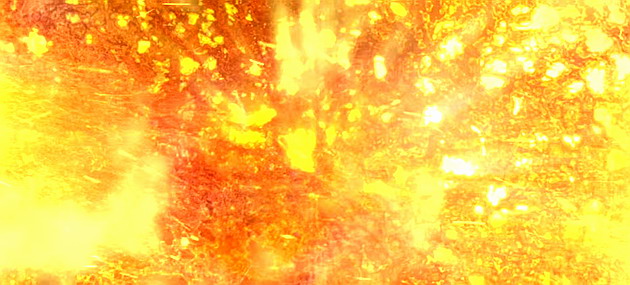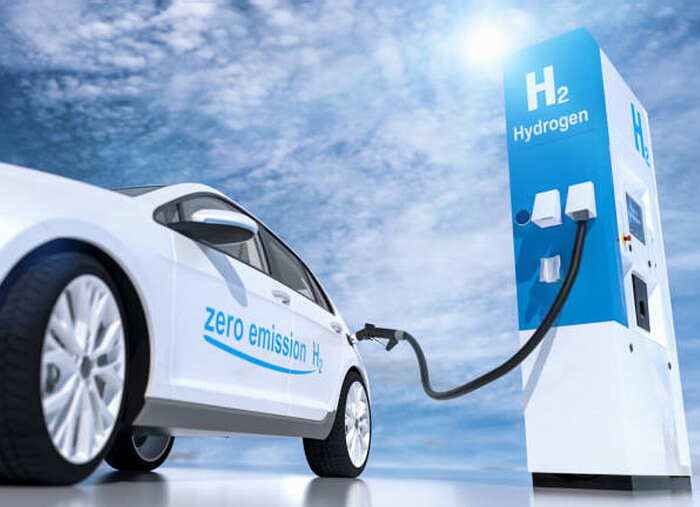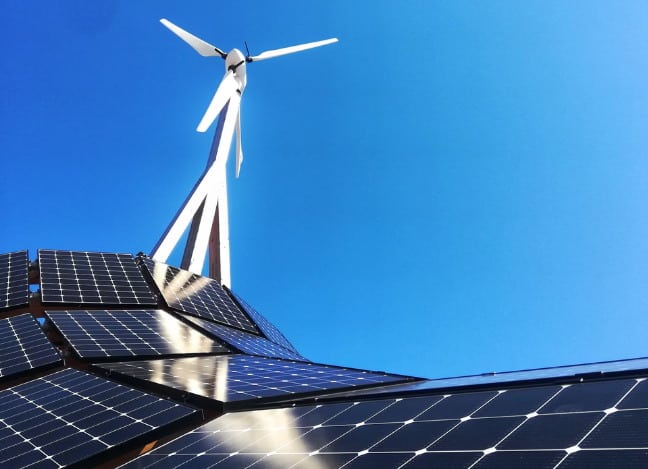Nuclear fusion is the thermonuclear reaction that feeds the Sun and all the other stars in the universe.
This awesome source of unlimited clean power is considered today the only resource of clean energy that can help us to get rid of fossil fuels for a cleaner environment.
Today, many teams of scientists around the world are working hard to make nuclear fusion a reality for us, and any team that will produce more energy from nuclear fusion than the energy consumed in the process will become the team that will change the future of mankind.
Nuclear fusion is considered a safe nuclear reaction because the meltdown of the nuclear reactor is physically impossible (no risk of nuclear disasters like the ones that took place in Chernobyl and Fukushima).
Nuclear fusion is today “the holy grail” of physics because many have tried to achieve it but failed, showing that fusion is a much more complex process than we previously thought.
Nuclear Fusion Definition
Nuclear fusion reaction is the thermonuclear process that fuses two small nuclei (hydrogen) to produce a larger nucleus (helium) and generate a large amount of clean energy without producing harmful nuclear waste or any forms of harmful emissions.
One of the fuels (deuterium) used in the nuclear fusion reaction can be found in seawater, so it is considered an almost unlimited resource here on the planet.
To make the nuclei of atoms combine not repel each other, a very high temperature must be produced in the reactor (millions of degrees), we practically need to produce a small Sun inside the reactor.
We don’t have access today to such materials that can withstand such high temperatures without melting instantly, which means that the plasma containing the fusing nuclei doesn’t need to touch the wall of the reactor.
We can keep the very hot plasma away from the walls of the reactor with the help of gravity, inertia, or rather magnetism.
These special conditions required to make the entire process working and very safe are proving that the nuclear fusion reaction is a very difficult and complex nuclear reaction compared to the level of technological development of mankind today.
Deuterium extracted from seawater and tritium obtained by putting in contact deuterium and lithium, represent the main elements used today in the experimental reactors.
Pros Of Nuclear Fusion
Being a nuclear reaction that produces no harmful emissions or nuclear waste, nuclear fusion is considered “the holy grail” of energy for mankind because it can produce much more clean energy than all the dirty energy produced by fossil fuels.
1. Represents a Great Resource of Clean Energy For Mankind
It is proven that the nuclear fusion reaction is a clean nuclear process that is capable of producing huge amounts of electricity without producing harmful emissions and little to no nuclear waste.
Being a great resource of alternative energy, nuclear fusion is considered the energy source of the future that is capable of replacing the dirty fossil fuels and make the environment clean again (as it was before the industrial revolution).
2. The Nuclear Fuel Used in the Nuclear Fusion Reaction is Virtually Unlimited
Deuterium and tritium are the nuclear fuels used in the nuclear fusion reaction today and all these elements are considered cheap and widely available on the planet.
Deuterium is present in seawater (covers 71% of the Earth’s surface), while tritium can be “bred” inside the reactor by putting in contact deuterium with lithium.
3. Is Safer Because is Easier to Control or Stop Compared to Nuclear Fission
Nuclear fusion produces no chain reaction, actually starting the nuclear fusion reaction itself (making the atomic nuclei to fuse together and produce heavier atoms and of course energy) is quite difficult because the temperature inside the reactor must be similar to the temperature in the Sun.
Being a nuclear reaction that turns one element into another without destroying the atoms (nuclear fission destroys the atoms to generate energy, while nuclear fusion turns one element into a heavier one with the release of clean energy in the process), nuclear fusion can be easily controlled and stopped when necessary.
4. Produces A Tiny Amount Of Nuclear Waste
Nuclear fusion is considered today much safer than nuclear fission because the nuclear reaction itself produces clean energy without releasing carbon emissions and produces little or no nuclear waste.
Using deuterium and tritium as nuclear fuel in the nuclear fusion reaction will generate heat, light, helium, and some neutrons (a small amount of radioactive metal).
At the same time, the core remains dangerous (radioactive) for only about 100 years.
5. Can Use A Very Cheap Nuclear Fuel
Deuterium can be found in the oceanic water that covers about 71% of the Earth’s surface, which means that we have at our disposal a tremendous amount of cheap nuclear fuel available to perform the nuclear fusion reaction here on the planet.
I mentioned before that tritium can be “bred” in the reactor using deuterium and lithium.
6. Is a Safe Form of Nuclear Power
Today, mankind uses many forms of power to cover all its energy demand, some of them being dirty (fossil fuels), others dangerous (nuclear fission produces nuclear waste), and the others are represented by the renewable energy sources, which are clean.
If fossil fuels are releasing harmful emissions in the atmosphere, the renewable energy sources such as hydropower and tidal energy can affect marine life, while wind power can kill birds and bats.
Nuclear fission produces clean electricity (without releasing harmful emissions), but at the same time produces radioactive waste, which is very hazardous for any living being.
However, nuclear fusion being a nuclear reaction that turns one element into another (by fusing the atoms together not by destroying them) produces a huge amount of clean energy and only a small amount of radioactive waste.
In addition, a reactor that would use the nuclear fusion reaction to generate clean energy would be much safer than a fission reactor because there is no danger of meltdown of the fusion reactor and the nuclear fusion reaction itself can be easily controlled and stopped.
Cons Of Nuclear Fusion
There are some downsides related to nuclear fusion, some of them being created by the high prices of the technology and the others by the extreme temperatures required to perform the nuclear fusion reaction.
1. There is No Certainty That the Nuclear Fusion Reaction Will Ever Be Commercially Viable
There are several extreme conditions required to perform the nuclear fusion reaction, which are very hard to achieve here on the planet.
Actually, we need to replicate in safe conditions the nuclear fusion reaction that is powering the Sun reaching the same extreme temperature.
Only time can answer the question if nuclear fusion will ever become commercially viable.
Let’s hope that the technology will evolve fast enough to help us get rid of the polluting fossil fuels in just a couple of decades.
2. Building a Nuclear Fusion Reactor is Very Expensive Today
Besides the fact that the nuclear fusion reaction requires the fulfillment of several extreme conditions (temperature of millions of degrees), the price paid for the technology (cutting-edge technology) is very high.
Nuclear fusion is only tested today in experimental reactors and even these experimental projects require today huge amounts of money.
However, all the work and the financial effort made will worth if we manage to make nuclear fusion commercially viable because it will help us to put an end to the fossil fuel era, and we will all have a chance to live in a cleaner environment.
3. Is Expected to Produce Clean Energy on a Large Scale Only in 2050
It seems that we need to wait more than three decades till the middle of the century (2050), to see nuclear fusion as a mass producer of energy, and we are already facing many issues with the air, soil and water pollution mostly caused by the use of fossil fuels.
4. The Billions Invested in the Research of Nuclear Fusion Could Be Spent to Develop the Worldwide Renewable Energy Generation Capacity
There are more than three decades to wait till 2050, and we’ve already invested billions of dollars in research projects for nuclear fusion.
Many voices are saying today that nuclear fusion is a waste of time, work and financial resources, and the money would be better invested to increase the generation capacity for renewable energy on the planet because it would help us to get rid of fossil fuels maybe even quicker than 2050.
5. Once Achieved, Nuclear Fusion May Remove Any Incentives Granted For Renewable Energy
If we manage to make nuclear fusion commercially viable, the mass production of clean energy without polluting the environment (but consuming the seawater) would put an end to the incentives granted by the governments for renewable energy.
Renewable energy can help any householder to become energy-independent, but nuclear fusion can only produce clean power using a nuclear power plant, which will return the moment when we all have paid energy bills to a local utility company, so no more energy freedom.
Conclusion
Nuclear fusion is considered today “the Holy Grail” of energy, and it would be better to make this clean energy source commercially viable before the middle of the century because the environment is very polluted today due to the fact that we are still burning fossil fuels on a mass scale without realizing that the pollution produced this way is destroying the environment and weakens our health.




Unfortunately, I really cannot see where you are coming from here.
Yes, nuclear fusion is not technically renewable, but the materials required are set to last a lot longer than 80years.
The most viable method of producing energy is through deuterium-tritium fusion (DT)
Deuterium is easily distilled from seawater, and is known as heavy water. It is known that the supply or deuterium is almost inexhaustible.
Similarly, tritium can be made by using lithium and deuterium in a fusion reactor. The terrestrial reserves of lithium will be exhausted in 1000years if used in fusion, and the sea-water reserves will last for millions of years, making tritium also virtually inexhaustable.
In 2018, House Republicans passed a bill to reopen the Yucca Mountain facility. It also calls for a plan to temporarily house the spent fuel. Private companies have proposed state-of-the-art, underground facilities in remote areas of west Texas and southeastern New Mexico. They would store nuclear waste for up to 40 years. Nuclear power is not a renewable resource. There is 80 years worth of fuel in known reserves if used at current rates.